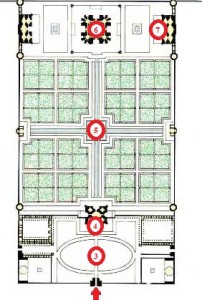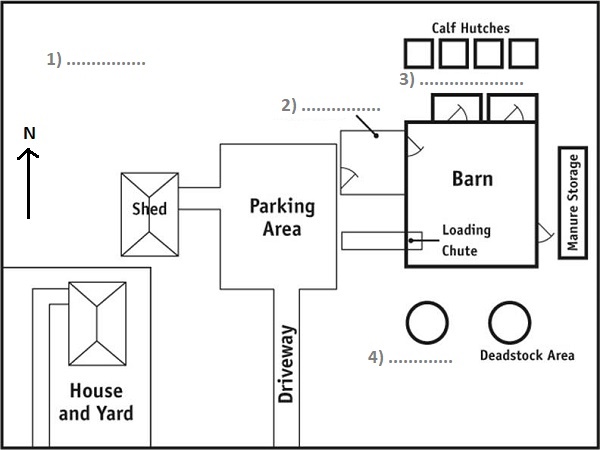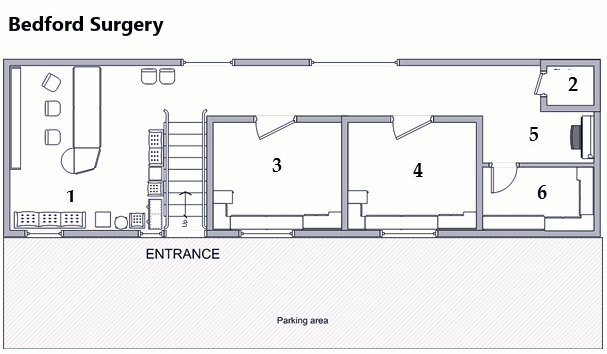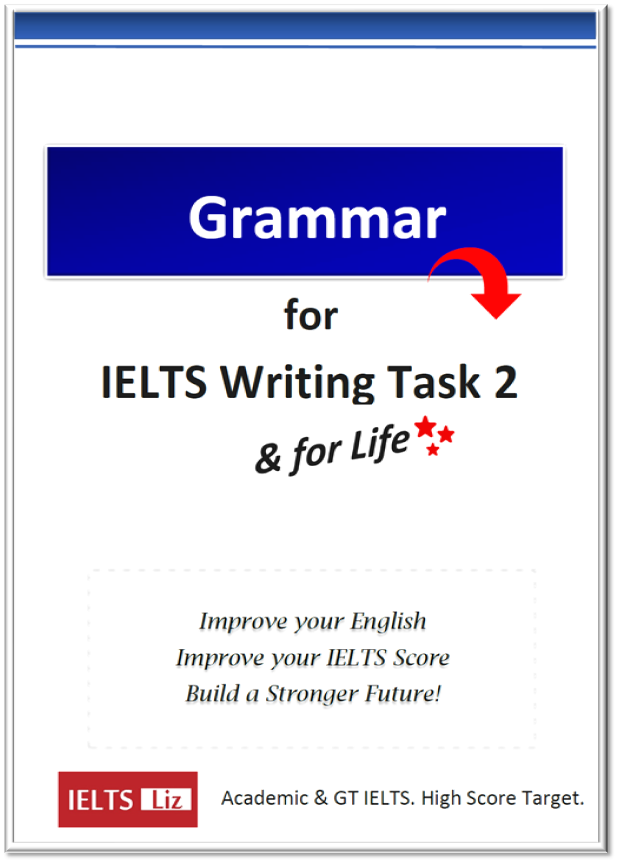Maps frequently appear in the IELTS listening test. They can appear in any section, although it is more common to find them in Section 2. Below you will find useful tips and techniques to tackle a map completion question in IELTS listening with some map practice lessons as well to hone your skills.
IELTS Listening Maps: Essential Tips
Below are a few tips and techniques to help you tackle map questions in IELTS listening. Hopefully you will already have prepared language for maps because they do appear in IELTS Writing Task 1 Academic test.
- Maps can appear in any part of the listening test, although they appear more often in section 2. Section 2 is one speaker talking about something of general interest, such as a museum or, in the practice lesson below, a farm.
- Maps are visual so there is a lot to look at in a short amount of time before the recording begins. For this reason, you need to be ready to tackle this type of question.
- First notice the title which tells you what the map is showing.
- Notice next the number of buildings, facilities or rooms. Notice their names and their location.
- Maps will nearly always have rooms and buildings labelled to help you. These words are likely to appear in the recording.
- When you see the location of the places on the map, you’ll be able to recognise the type of language you might here, such as:
- beyond, next to, after that, further in, to the side, to the left, to the east, opposite, at the end of the road, by the gate etc.
- Then check the location of the questions. The questions will come in order in the recording, but they might be placed in different parts of the map. So, make sure you know where they are on the map and which order they are in so you can move to the next question easily.
- Locate north. This is often helpful if it is given on the map.
- See if there are any arrows or if the map shows a logical path that the speaker might take as they talk about the place. Don’t forget that the speaker will always give information in a logical order as they describe the place.
- Always note how many words you need for the answers. Many people forget to read the instructions properly.
- As you move from question to question, follow the order of information in the recording. You’ll notice which places on the map have been mentioned so that you can keep your place in the recording. Getting lost in the recording is a common reason why people miss answers.
- Most map recordings are similar to a guided tour which follows a logical order.
- Don’t be distracted by extra information. you will hear a lot of extra words. Don’t get lost in detail and focus on listening for those answers.
Now it’s time to practice listening for maps. Use this as learning curve to see where your strengths and weakness lie in tackling these questions.
Practice Lessons for IELTS Map Listening
IELTS Map Listening Practice 1
The Taj Mahal
In this listening exercise, you will listen for questions 1 to 7 in the recording. But questions 1 and 2 are not map labelling, only questions 3-7 are map labelling. This means you need to listen carefully to know when to move from questions 1-2 to questions 3-7 about the map.
Questions 1-2: Complete the sentences below using no more than one word and/or a number.
- The Taj Mahal was completed in ……………..
- Around ………… labourers were used in its creation.
Questions 3-7
Label the map below using no more than two words and/or a number.
Recording:
.
TRANSCRIPT AND ANSWERS
Click below to reveal the transcript and answers to this lesson. The transcript is given as a way to check answers. You will not get this in the test. I like to provide transcripts so that people can review their answers to see precisely why they got a question right or wrong. With map listening exercises, it’s useful to review language as well.
TranscriptWelcome to the Taj Mahal. This is one of the most famous monuments to love in the world. It was built between 1631 and 1653 in the city of Agra by the Mughal Emperor Shah as a mausoleum for his wife. The construction involved some 20,000 workers and incorporated materials from China, Tibet, Sri Lanka and Arabia.
We are here at the Outer Gate and directly in front of us is the forecourt. On the left hand side of the forecourt, you will see some subsidiary tombs and opposite that are the tomb attendants’ quarters. If you go straight ahead, you will come to the Great Gate and beyond that is the formal gardens. The gardens are divided into 4 sections by paths which represent the 4 rivers of paradise. Midway, where the paths intersect, is a marble pond, in which the mausoleum is beautifully reflected. Walking through the gardens, past the pond, you will come to the mausoleum itself which has a marble dome, 35m high. Each side of the building has archways which are framed by carefully chosen verses from the Qur’an in beautifully stylised calligraphy. To the left of this, is the mosque and to the right you can find a guesthouse. Now I’ll give you some time to wander round and see this marvel for yourself.
- 1653
- 20,000
- forecourt (you must have the correct spelling)
- Great Gate (capital letters not important – see IELTS Exam FAQ page)
- pond / marble pond
- mausoleum
- guesthouse / guest house
.
*******************
IELTS Map Listening Practice 2
The Farm
Questions 1 – 4: Complete the diagram using no more than two words.
RECORDING:
.
MAP ANSWERS & TRANSCRIPT
Click below to reveal the transcript, answers and a list of keywords. I suggest you use the transcript after you complete the listening lesson to listen and read, then check the answer key.
Click below:
TranscriptAs you drive up the driveway you will immediately arrive in the parking area. You will see to your left the farmhouse where the farmer lives as you drive up and directly to the left of the parking area is the main shed. There are a number of smaller sheds located around the main shed which are not currently labelled on the map. In the northwest corner of the farm is a pasture area which is a wide grassy expanse. It provides rich organic grass for our cows and, along with other types of feed, gives us our organic status and key selling point. From the parking area, you go east through the milk house, which is used daily, and then into the barn. This is where the cows are often sheltered. On the other side of the barn is the manure storage. To the north you will find the calf hutches which are located just beyond the maternity pens. Only 30% of our cows are used for breeding. In the bottom left corner of the barn is the loading chute. To the south are two circular areas, one of which is the feed storage and the other the deadstock area. We hope you will enjoy looking around our farm and learning about how we manage our cows.
- pasture area
- milk house
- maternity pens
- feed storage
Knowing keywords for maps and building plans is essential for success in IELTS listening. Here are some words from the recording.
- You will see to your left…
- directly to the left of ….
- located around
- which are not currently labelled on the map
- In the northwest corner
- From the parking area, you go east
- On the other side
- To the north you will find
- which are located just beyond….
- In the bottom left corner of the barn
- To the south are two circular areas
Adapted from royal.gov.uk
.
************************
RECOMMENDED FOR YOU
.







